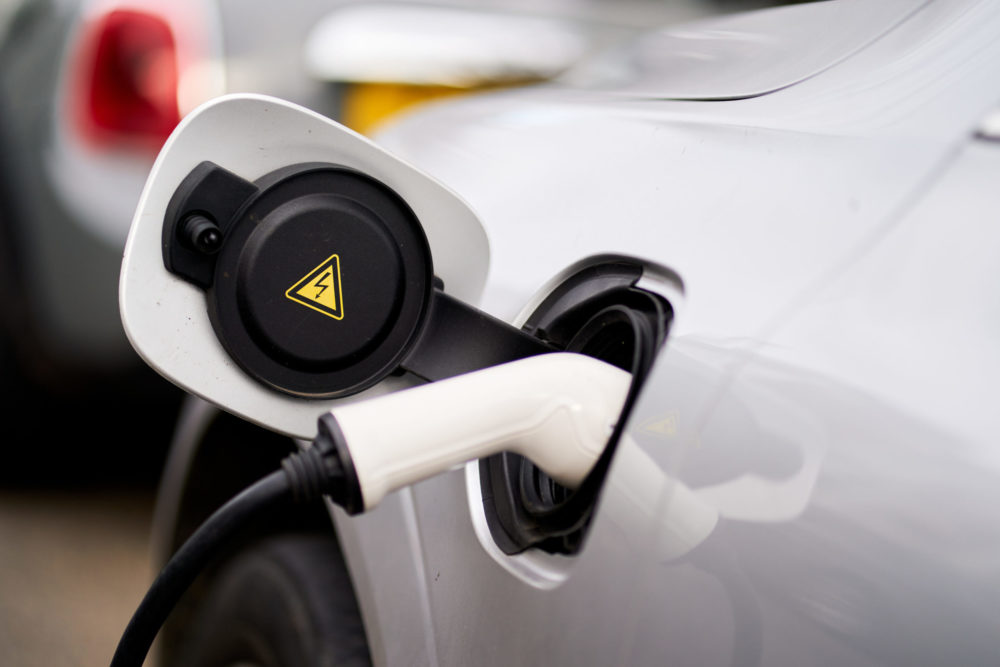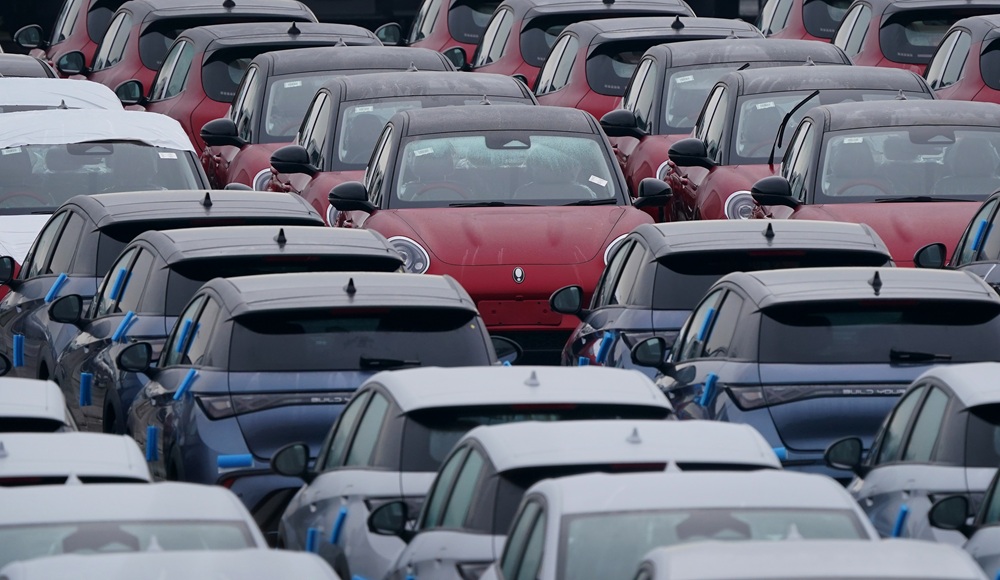As EV sales surge, the UK car industry could be about to reach a turning point

Peter Wells, Professor of Business and Sustainability, Cardiff University
Last year, electric car registrations in the UK topped those of Germany. The number of UK sales (382,000 vehicles) came from growth of 21.4% on 2023, making the UK the largest market for electric vehicles (EVs) in Europe for the first time.
In Germany, meanwhile, registrations fell by more than 25% to 380,000 vehicles in 2024 as consumer subsidies of up to €4,500 (£3,800) for private buyers were withdrawn amid a budget crisis.
And at the same time, the installation of charging points across the UK has accelerated.
Ultra-rapid chargers
More than 20,000 points were added, a growth of 38% that brings the total to 73,699. Growth was particularly marked for the number of ultra-rapid (over 150kW) chargers with 7,021 added, and for “destination” chargers at venues such as restaurants. This news could go some way to reassuring would-be buyers, who are often seen to be concerned about the lack of public charging points.
And very low tax rates (2% and set to rise by 1% a year for three years) have meant corporate registrations now account for 90% of the UK EV market. From April 2025 however, EV owners will start paying vehicle excise duty (“car” or “road” tax) at £195 per year, having previously been exempt.
So is the UK market a haven in a global maelstrom? The key to the market share taken by EVs has been the UK government’s zero emission vehicle mandate, and the generous provisions made to company car buyers. The mandate is aimed at ending the sale of new petrol and diesel cars in the UK by 2035.
At the same time, the UK has not imposed the tariff barriers that the EU and US have introduced for Chinese-manufactured EVs.
Fines
Manufacturers selling in the UK that fail to comply with the targets of the zero emission vehicle mandate could face fines of up to £15,000 for every non-EV car they sell. This approach is very different to the typical incentives offered to buyers in many markets.
But EV sales in 2024 made up only 19.6% of the UK market, below the mandated level of 22%, leading to speculation about whether fines will actually be imposed on non-compliant manufacturers.
Given over-capacity and fierce competition in the Chinese market, manufacturers there will look even harder for export markets – and the UK will be an obvious target.

EVs are already accounting for about 80% of total Chinese vehicle imports to the EU. Chinese new entrant brands for 2025 include Leapmotor, Xpeng, Seres, NIO, and Zeekr, with Polestar (Swedish, but owned by Chinese firm Geely), MG, BYD and Ora (Great Wall Motors) already trading in the UK.
Now that the UK is outside the EU, it falls to the Trade Remedies Authority to determine whether protectionist measures like tariffs are needed against imports from China or any other country – although the EU and UK have a trade agreement on EVs that runs until 2027.
In July 2024 the EU imposed extra tariffs – on top of the 10% already levied – on Chinese EVs. This took the rates as high as 48% in some cases.
To complicate matters, inside the EU there is also uncertainty over European manufacturers meeting CO2 emissions limits and the scope for “pooling” strategies (where manufacturers buy emissions “credits” from those – like Tesla – that are beating targets). Decisions taken there could spill over into the UK market.
2025 – a watershed year
But the momentum behind EVs is building. According to charging point tool Zapmap, only 3% of EV drivers would go back to petrol or diesel – an impressive level of technology acceptance.
Manufacturers that cannot meet the UK’s 2025 target of 28% of new car sales being EVs may simply stop selling petrol or diesel vehicles rather than risk fines. In the meantime, Chinese EV brands have been recruiting dealerships and showing off their latest models. Chinese cars can offer consumers a combination of low price, good specification, innovative design and technology that is often more advanced than that of “legacy” companies.
So 2025 could well be the year that BYD replaces Telsa as the best-selling EV brand in the UK (though 2026 is more probable as its builds up its sales network). Nonetheless, it’s possible that Chinese-manufactured cars could be on their way to making up more than 10% of the EV market – or 50,000 cars – by 2026. For consumers and the environment, it could be a hugely positive outcome; for the UK and European industry, a severe blow.
For comparison, the top-selling Chinese brand EV in the UK in 2024 was the MG4, with nearly 15,600 vehicles sold (though the Tesla Model 3 – more than 17,400 vehicles sold – is also built in China).
As I argue in my forthcoming book, in Europe and the US, the automotive industry has successfully made the transition to EVs an issue of jobs and the economy rather than climate change and the environment.
The UK is at a crucial pivot point. Does it stick to its carbon emissions targets that would result in an increased market share for imported EVs? Or does it acquiesce to industry demands for continued protection for UK-built products in the form of subsidies, tariffs or deferred targets for EVs?
If it’s the former, it could be the beginning of the end of Margaret Thatcher’s grandiose 1980s vision of Britain’s great car economy.
This article was first published on The Conversation
![]()
Support our Nation today
For the price of a cup of coffee a month you can help us create an independent, not-for-profit, national news service for the people of Wales, by the people of Wales.





Main agent said yesterday that private new EV sales were poor .Hybrids a bit better!!
Around 4% of cars on the raod in the UK are EV. Sales my be surging (or not) but 4% is hardly a vote of full support. https://www.zap-map.com/ev-stats/ev-market
It won’t be long before it becomes a “no brainer” to buy one when the price, range, recharge time and servicing costs outperform carbon vehicles. It’s likely these vehicles will come from China because the UK has Brexit and global free trade meaning there’s nothing to stop them flooding the UK with state subsidised bargains.
To quote a popular television actor: “I don’t believe it!” Government propaganda to try and influence us to buy EVs.